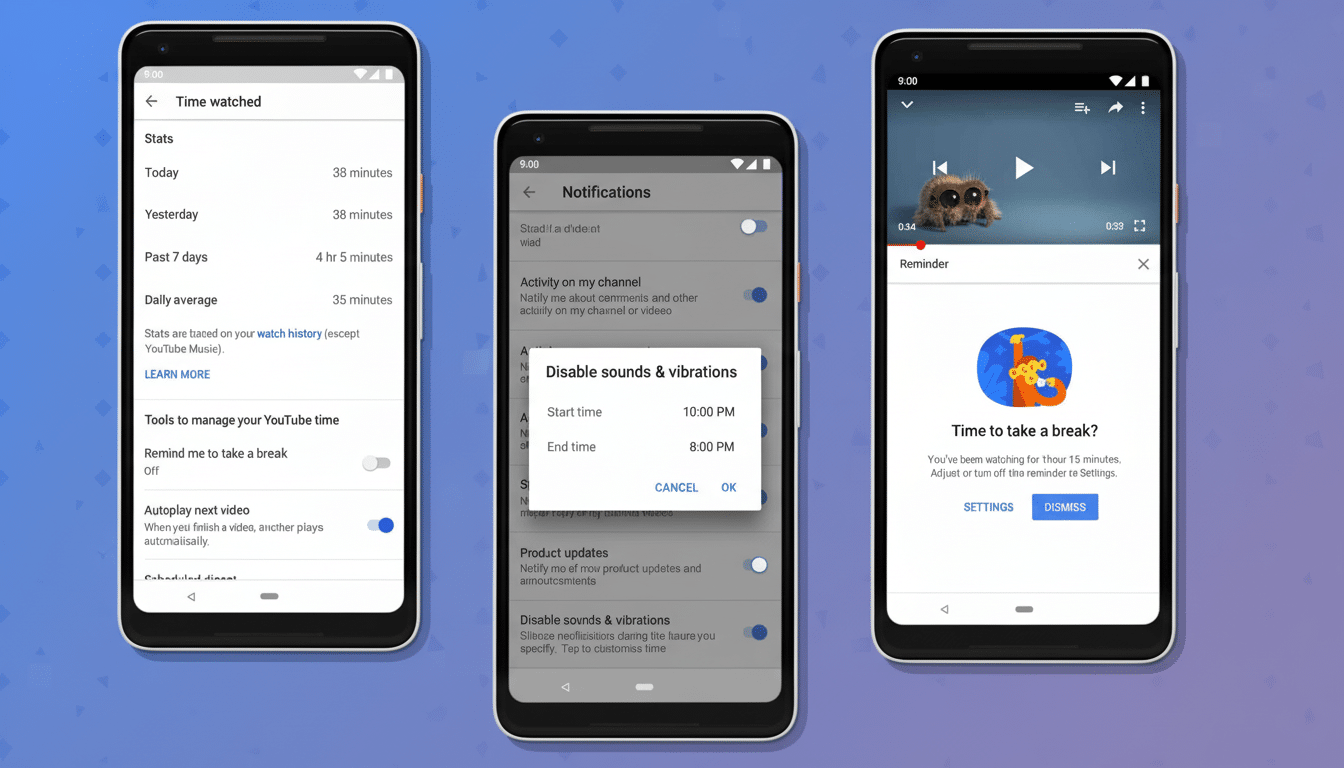YouTube announced a new timer that allows users to set a daily limit for watching Shorts, with the goal of disrupting the infinite swipe that can silently turn minutes into an hour. It’s a tiny bit of friction in a product designed for speed, and it points to how platforms are trying to reconcile surging short‑form engagement with mounting scrutiny over compulsive design.
How the New Shorts Daily Timer Works Inside YouTube
The timer resides in the app’s settings, under YouTube’s digital well‑being controls, where you’ll also find features like Time Watched. Users select a daily cap for Shorts. When you’ve reached that threshold, a pop‑up window appears and the Shorts feed pauses, encouraging you to take a break.
- How the New Shorts Daily Timer Works Inside YouTube
- Why YouTube Is Adding Friction to Shorts Viewing Now
- YouTube’s Broader Digital Well‑Being Play
- How YouTube’s Shorts Timer Compares With Competing Tools
- Legal and Policy Backdrop Shaping Platform Design Choices
- What Users and Parents Need to Know to Set Healthier Limits

The reminder is dismissible for grown‑ups, so you can keep scrolling if you’d like. Parental controls are coming, YouTube says, so that supervised accounts receive non‑dismissible prompts in accordance with features created for teens and families.
The addition didn’t come as a surprise to followers of the platform. The control was previously discovered by Android Authority in Android builds, and YouTube had confirmed it was testing a Shorts‑specific limit to sit alongside existing well‑being tools.
Why YouTube Is Adding Friction to Shorts Viewing Now
Short‑form video is YouTube’s fastest‑growing surface, and the company claims that Shorts now reaches over 2 billion logged‑in viewers a month and receives tens of billions of daily views. And that scale, coupled with an infinite scroll interface and unpredictable rewards, is exactly what academics point to when they say that feeds are hard to put down.
Public pressure is intensifying. The United States Surgeon General warned that social media could be harmful to the mental health of young people and called for stronger default protections. According to Common Sense Media, teenagers are on social media and video chat for several hours a day, already more than eight hours of total screen media time, not including schoolwork. Time caps are not the answer to everything, but they can break up a binge and bring back user intent.
YouTube’s Broader Digital Well‑Being Play
YouTube already has “Take a Break” and “Bedtime” reminders, which pause a video or send you a notification at certain times of day or during an interval. Those prompts span all videos. The Shorts timer is more direct: it disallows the feed that’s most likely to hold you in an involuntary loop.
(In that scenario, the user might establish a 30‑minute daily cap for Shorts action while not impacting long‑form watching at all.) That approach acknowledges that short‑form and long‑form work for different habits, different moods and contexts, and it’s consistent with research that suggests the best nudges are context‑specific rather than blanket ones.

How YouTube’s Shorts Timer Compares With Competing Tools
TikTok provides daily screen time management, password‑protected limits and stricter defaults for younger users. Instagram offers daily time limits, Quiet Mode and “Take a Break” prompts. On a device level, it is possible to set app‑level time caps and downtime schedules in both Apple’s Screen Time and Google’s Digital Wellbeing.
YouTube’s version of the Shorts timer follows in spirit but is optional for adults at present. The hard part will come down the line: tighter integration with supervised accounts so that parents can set and enforce limits — an area where rivals have moved aggressively, to head off regulatory risk.
Legal and Policy Backdrop Shaping Platform Design Choices
Pressure isn’t just cultural. A recent analysis by Bloomberg Law counted nearly 2,000 active lawsuits in the United States accusing social platforms of using addictive design to harm young users. In Europe, the Digital Services Act mandates that very large platforms assess and address systemic risks, including those related to mental health, while the UK’s Online Safety Act gives regulators authority to require stronger protections for children.
Features such as timers and reminders allow platforms to show some degree of responsibility without choking off engagement altogether. Critics say dismissible prompts can lead to a “check the box” mindset. Supporters, though, argue that such layered controls — enabled by default for teens and supported by parental tools — can substantially mitigate harmful overuse.
What Users and Parents Need to Know to Set Healthier Limits
To test out the Shorts timer, go to Settings in the YouTube app and scroll down to Time Watched or Digital Well‑Being. Establish a daily limit for using Shorts that reflects what your ideal use would be; many people begin with 20 to 30 minutes in order to keep short breaks from turning into a rabbit hole.
Parents should match the Shorts timer with platform‑level family tools as well as device‑level controls like Screen Time on iOS or Google Family Link for Android. Those systems can lock down limits behind a passcode, and enforce rules consistently across apps, not just YouTube.
For both creators and brands, the change should not appreciably alter reach, but it’s another signal that healthy session length — not unchecked time — is becoming the north star. Look for tailored nudges around binge‑prone surfaces as platforms aim to bolster user trust without dulling the allure of short‑form video.

